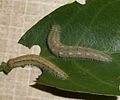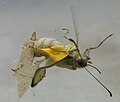- Pieris pigeaBoisduval, 1836
- Pinacopteryx albaWallengren, 1857
- Belenois inanaButler, 1870
- Pieris pigea ab. rubrobasalisLanz, 1896
- Pieris pigea ab. caffrariaLanz, 1896
- Pieris rubrobasalis var. nitidaAurivillius, 1899
- Pieris saalmuelleriAurivillius, 1899
- Pinacopteryx astarteButler, 1900
- Dixeia astarte
- Pieris kueckeniSuffert, 1904
- Pieris wagneriSuffert, 1904
- Pieris rubrobasalis ab. lathyanaStrand, 1909
- Pieris eliaStrand, 1912
- Pieris pigea f. lathyiHulstaert, 1924
- Pieris leplaeiHulstaert, 1924
- Pieris leplaei f. reductaHulstaert, 1924
- Pieris pigea pigea f. vulgarisUngemach, 1932
- Pieris pigea pigea f. rubritinctaUngemach, 1932
- Pieris pigea pigea f. luteaUngemach, 1932
- Pieris pigea ab. citrinaRomieux, 1934
- Dixeia pigea f. citreusTalbot, 1943
- Dixeia pigea f. luteolaTalbot, 1943
- Dixeia pigea f. lutescensTalbot, 1943
- Dixeia pigea f. erubescensTalbot, 1943
|

















